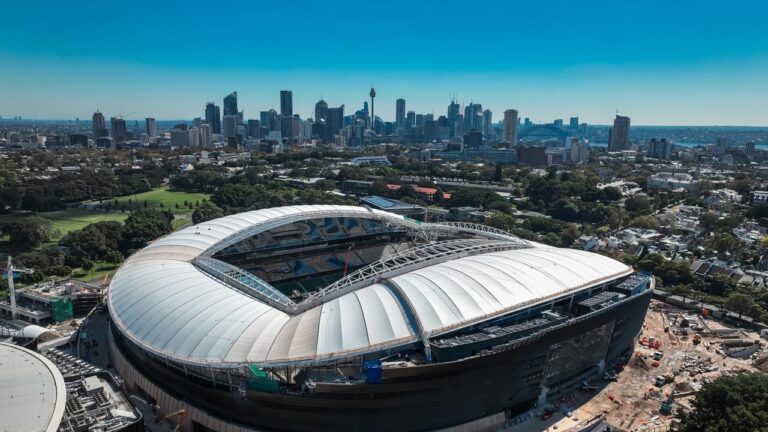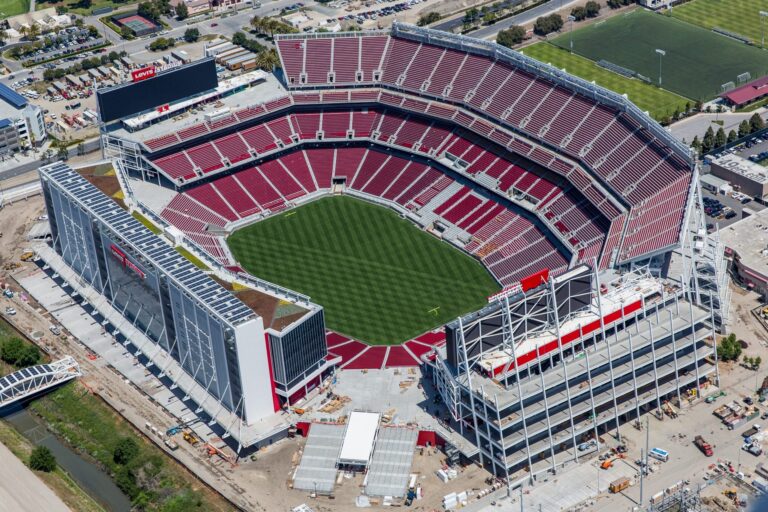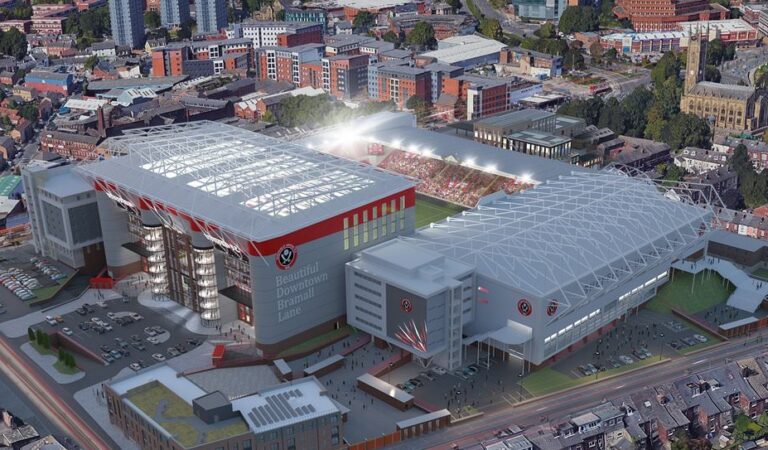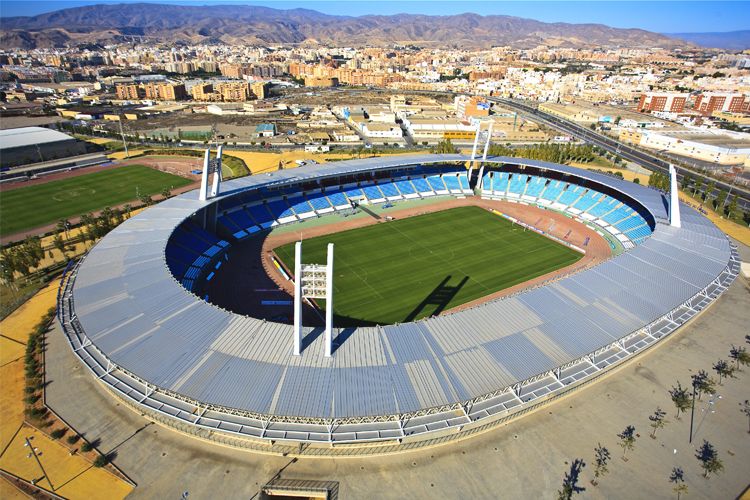Mercedes-Benz Stadium Capacity, Tickets, Seating Plan, Records, Location, Parking
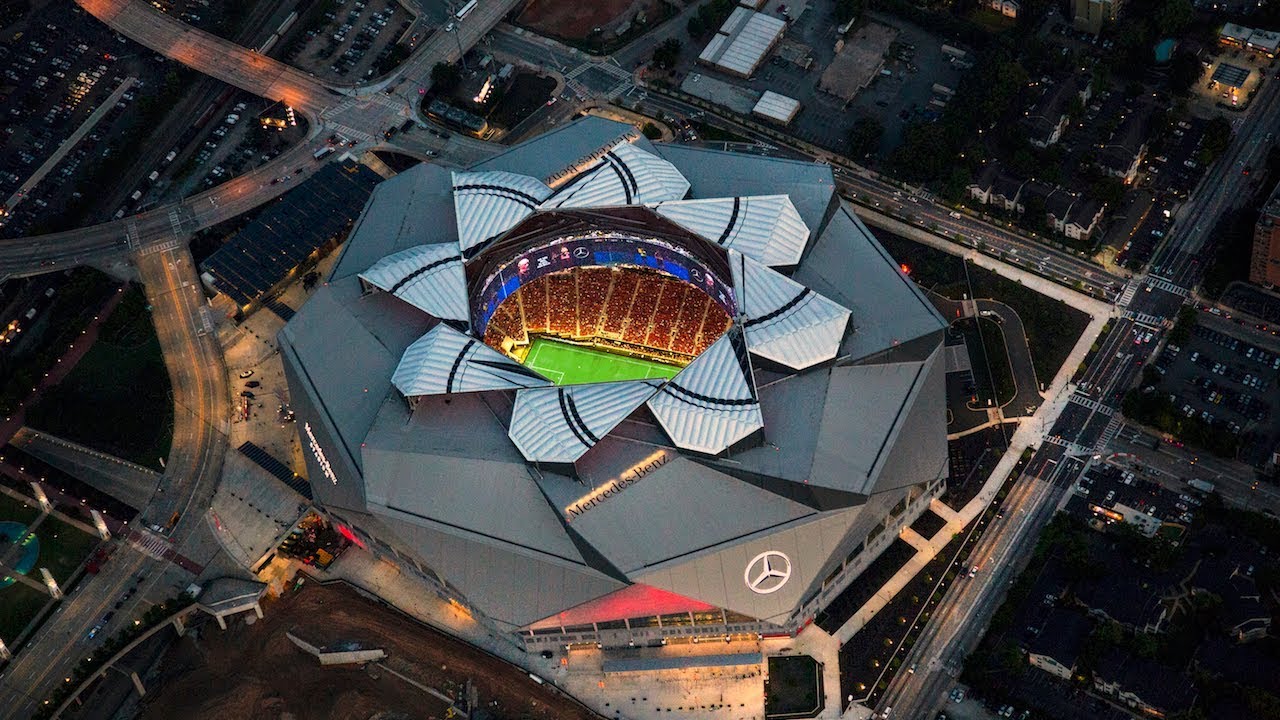
Mercedes-Benz Stadium is a multi-purpose stadium in Atlanta, Georgia, USA. It opened in August 2017 to replace the Georgia Dome. The Atlanta Falcons of the National Football League (NFL) and the Atlanta United FC of Major League Soccer (MLS) both call it home.
The stadium is owned by the Georgia state government through the Georgia World Congress Center Authority and is operated by AMB Group, the parent organization of the Falcons and Atlanta United. As of June 2016, the total cost of its construction was estimated at US$1.6 billion.
Even though the retractable roof wasn’t done yet, the stadium opened on August 26, 2017, with a preseason game between the Atlanta Falcons and the Arizona Cardinals. When Mercedes-Benz Stadium opened, some events that had been held at the Georgia Dome were moved there. These included the SEC Football Championship Game and the Peach Bowl.
In 2018, it hosted the College Soccer Playoff National Championship and MLS Cup (as Atlanta United had the home-field advantage), and hosted Super Bowl LIII in 2019. Mercedes-Benz Stadium will host multiple games during the 2026 FIFA World Cup.
| Built In: | May 19, 2014 |
| Capacity: | 71,000 |
| Home Teams: | Atlanta Falcons |
| Ground Size: | (109.7 m × 48.8 m) |
Mercedes-Benz Stadium History
In May 2010, several news outlets reported that the Atlanta Falcons were interested in replacing the Georgia Dome with a newly built outdoor arena, although at the time it was planned to retain the Georgia Dome to continue hosting non-Georgia-related events NFL . The team was looking for a new stadium due to the team’s desire to play outdoors, as well as Falcons team owner Arthur Blank’s interest in hosting another Super Bowl.
The stadium was also sought as a possible bid to host an upcoming FIFA World Cup. Kansas City-based architectural firm Populous released full plans for the proposed stadium in February 2011. Populous’s estimated initial cost for the project was US$700 million. Under the master plan, the stadium would have a normal capacity of 71,000, but it can be expanded to 75,000 for special events like the Super Bowl. It will also feature multiple club levels, suites, and exhibit area.
In April 2012, Populous published a new estimated price of US$947.7 million, which was significantly higher than the previous proposal of US$700 million. In April 2012, The Atlanta Journal-Constitution reported that if an agreement was reached, construction of the new stadium was expected to begin in 2014 and the Falcons would begin the regular season in 2017. The proposed location for the new stadium is a large parking lot in the Vine City neighborhood of Atlanta, which is less than a mile north of the current location of the Georgia Dome. Once construction was complete, the Georgia Dome would later be demolished.
On August 24, The Atlanta Journal-Constitution reported that an official agreement could be reached on building a new stadium by the end of 2012. They also reported on September 10 that Atlanta Mayor Kasim Reed said improvements on site they could probably add to the total cost. to US$1.2 billion; however, that does not increase the actual cost of construction, which still stands at an estimated US$948 million.
The Georgia World Congress Centre Authority approved the plan and most of the agreement for the new stadium on December 10 by a unanimous vote. According to The Atlanta Journal-Constitution article, the term sheet is non-binding and changes can be made at any time regarding the construction of the stadium. However, the location of the stadium has yet to be determined; The reported proposed locations are within walking distance of the Georgia Dome, with one site located half a mile north and the other one block directly south, in one of the stadium’s existing parking lots.
The project first made national headlines in 2012 on December 15, with team owner Arthur Blank stating in The New York Times that he would rather see a new stadium built than a Georgia “remodeling job.” Dome. During a press conference on January 10, 2013, Mayor Reed expressed his optimism and confidence in the construction of the new stadium; he also mentioned the possibility of the new stadium helping the city compete for its Major League Soccer first team.
On March 7, 2013, the Falcons and the city of Atlanta agreed to build the new downtown stadium. The maximum public contribution to the project was US$200 million, from the hotel and motel tax in Atlanta and unincorporated Fulton County. The Atlanta City Council officially approved the stadium on March 19, 2013. The council voted, 11 to 4, to use the city’s hotel and motel taxes to pay US$200 million for construction costs and potentially several times more for financing costs. , maintaining and operating the stadium through 2050. On May 21, 2013, the NFL approved a $200 million loan to the Falcons organization for the purpose of building the stadium.
The Falcons unveiled a conceptual design for the new stadium on June 18, 2013, with a proposed capacity of 70,000, 7,500 club seats, and 180 luxury suites.
Arthur Blank indicated that the groundbreaking for the stadium would take place the last week of March 2014. Just after Martin Luther King Jr. Drive closed permanently, Mount Vernon Baptist Church held its last Sunday service on March 9 before of the historic church being demolished. Friendship Baptist, the birthplace of Spelman College and Morehouse College, was also torn down and relocated to make room for the stadium. Due to legal issues related to the bond issue, construction of the stadium did not begin until May 19, 2014.
Roof
The hallmark feature of the stadium is its retractable roof, which features a “pinwheel” consisting of eight translucent triangular panels. Each of the eight panels operates on two parallel straight rails; one rail is responsible for moving the panel while the other rail stabilizes the panel. Closing the roof takes slightly less time than opening it, as the roof has to release the seals at the beginning of the opening procedure and slow down towards the end to prevent the panels from derailing. When opened, the panels are designed to create the illusion of a bird’s wings spread.
Architect Bill Johnson explained that the circular opening in the roof was inspired by the Roman Pantheon (“Pantheon” was also the working design name for the building). The roof was designed to be made of a lightweight, transparent polymer material that can adjust its opacity to control light, and much of the exterior is either transparent polymer or glass to allow views outside. The center concourse and upper bowl were removed in the east end zone to allow an unobstructed view of the Atlanta skyline.
Below the roof is the “Halo”, a ring-shaped video board 58 by 1,100 feet (18 by 335 m) around its edge. Covering a total area of 62,350 square feet (5,793 m2), it was described by manufacturer Daktronics as “three times larger than the current largest single display board in the NFL” installed at EverBank Field in Jacksonville (also built by Daktronics). Daktronics also installed more than 20,000 square feet (1,900 m2) of other LED boards, including field-level advertising boards for soccer games.
The stadium’s roof can be kept open in light rainfall, as the electrical systems for all of the stadium’s video boards are outdoor-rated, and the field has a drainage system. AMB Group senior executive Mike Egan went so far as to describe Mercedes-Benz Stadium as “an open-air stadium with a roof” because of these features, but that other factors such as humidity and outside temperatures would be taken into account to decide if the roof would open.
Interior
The stadium also includes features specific to college football. It opened with two oversized locker rooms, each capable of holding 100 players, reflecting the much larger size of college football rosters compared to those of the NFL. However, the stadium initially did not include another important feature in that context: stairs connecting the seats to the field, making it difficult for bands to enter the field for halftime shows (most NFL teams, including the Falcons, they don’t have bands). It also has a soccer-specific configuration, with retractable lower seats to widen the pitch and mechanized curtains that limit capacity to around 42,500 people.
The stadium incorporates contemporary art into its interior and exterior design, with more than 180 commissioned works, including pieces by Nari Ward, Hank Willis Thomas, and Steven and William Ladd. The centerpiece of the art collection is Gábor Miklós Szőke’s stainless steel sculpture The Atlanta Falcon, which the artist claims is the largest free-standing bird sculpture in the world. Perched on a 4.0 m (13 ft) tall bronze football, the hawk is 12 m (41 ft) tall with a wingspan of 21 m (70 ft). The sculpture stands in front of the stadium, weighs more than 73,000 pounds (33,000 kg) and is the height of a four-story building.
Stadium Capacity
Mercedes-Benz Stadium has a seating capacity of 71,000.
Mercedes-Benz Stadium Seating Plan
Mercedes-Benz Seating Plan:
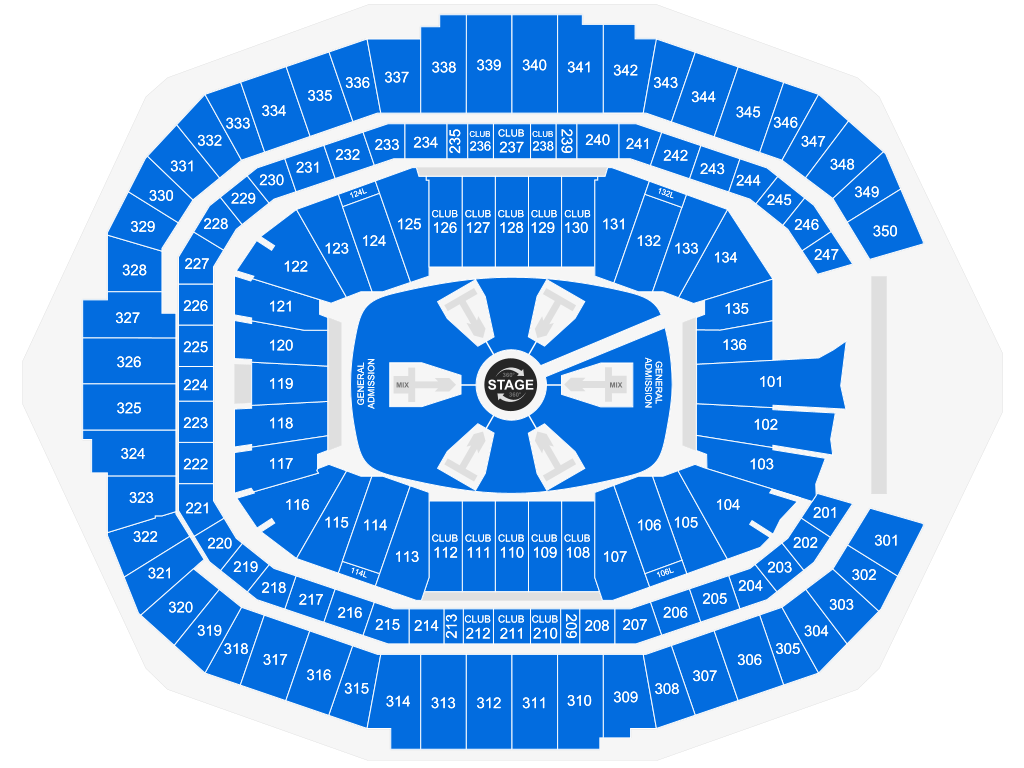
Notable Events & Records
NFL
On May 19, 2015, Mercedes-Benz Stadium hosted Super Bowl LIII in 2019, marking the first time Atlanta had hosted the game since Super Bowl XXXIV in 2000.
College and high school football
The Peach Bowl, Celebration Bowl, SEC Championship Game, and Chick-fil-A Kickoff Game moved from the Georgia Dome to Mercedes-Benz Stadium for the 2017 season. The SEC Championship has a long-term agreement with Mercedes -Benz Stadium through 2027. On February 26, 2019, it was announced that the Georgia Tech Yellow Jackets had agreed to play one home game annually at Mercedes-Benz Stadium from 2021 through 2026.
The 2018 College Football Playoff National Championship was hosted by Atlanta and Mercedes-Benz Stadium. In their first national championship game since 1982, the Georgia Bulldogs were defeated in overtime by the Alabama Crimson Tide.
On December 8, 2017, the stadium hosted the Georgia High School Association (GHSA) football championship games for private school Class 1A and Class 3A. The two remaining championship games scheduled for that day, Class 5A and Class 6A, as well as the four games originally scheduled for the following day were postponed and relocated to campus sites due to light snow that hit Atlanta that weekend.
The 2018 GHSA Soccer Championships were held on December 11 and 12 due to Atlanta United hosting the 2018 MLS Cup on December 8, as well as the 2018 Celebration Bowl scheduled for December 15. December. In May 2019, the GHSA announced that the soccer finals would be moved from Mercedes-Benz Stadium to Georgia State Stadium (a turner field redevelopment) starting in 2019, citing the higher costs of renting Mercedes-Benz Stadium compared to with the old Georgia Dome.
Upcoming Events
2026 FIFA World Cup
Mercedes-Benz Stadium will host matches during the 2026 FIFA World Cup, making it one of eleven US venues as well as one of five MLS venues to host matches.
Parking
You can access the Mercedes-Benz Loyalty Parking lot on Northside Drive between Magnolia and Rhodes streets. The lot is closest to Gate 1 of the Mercedes-Benz Stadium. This lot is reserved for those who drive a Mercedes-Benz vehicle ONLY.

